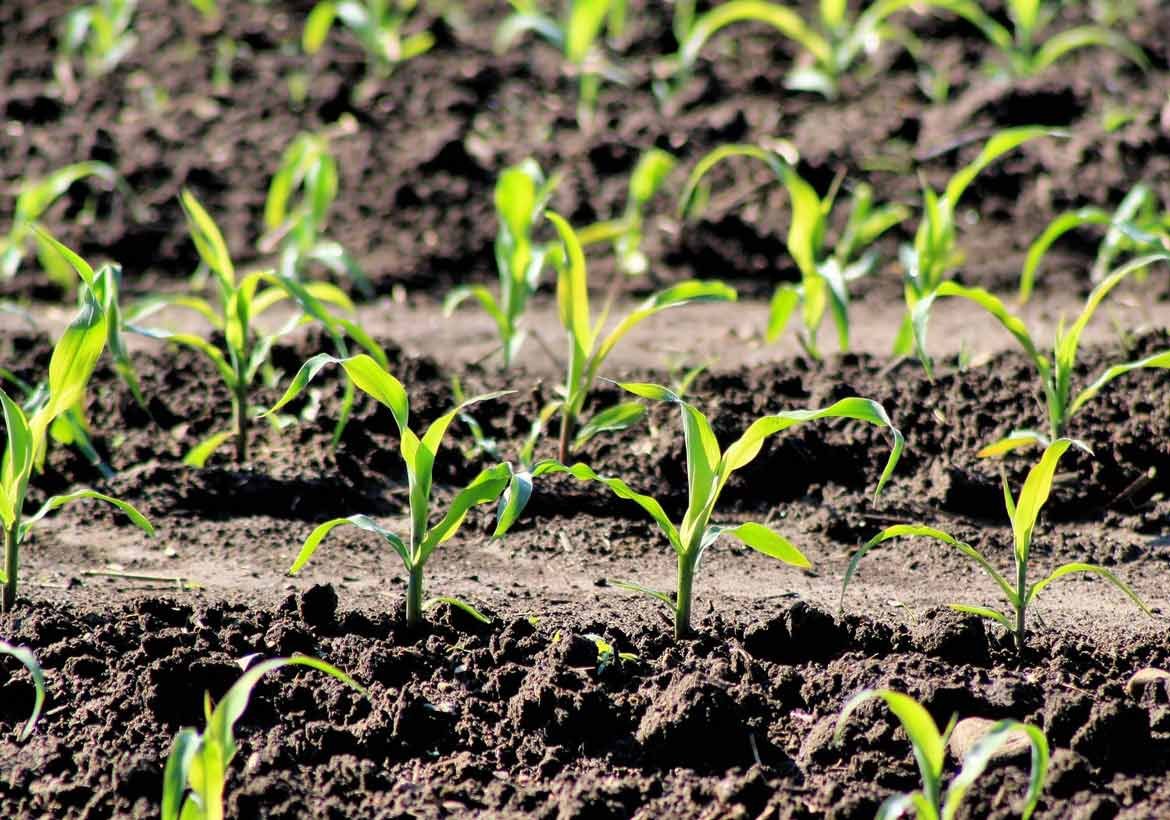A Foliar Program Is Part of a Comprehensive Program Aimed at Increasing Plant Health and Ultimately Crop Quality and Yield
It was an excited, almost frantic, call in 1988 from Joe Wipf in South Dakota. "We are in the midst of a severe drought and I have never seen such a stark contrast between our corn fields and the neighbors. You must come and see it." Wendell Owens, on the other end of the phone, had worked with Joe as a fertility advisor for the previous two years. That same day he hopped into his pickup and drove to South Dakota...what he saw was truly amazing.
The first thing Wendell noticed was the absolute color contrast between the fields. Joe's corn was green and growing with little sign of drought stress. The neighbor's corn exhibited all the typical signs of drought stress--off color, stunted and delayed growth, pineapple leaves, and dying plants. Trained to always observe, what he saw next almost made the hair stand up on the back of his neck...
 Joe's field of corn was entirely free of grasshoppers...right to the field's edge. Grasshoppers were in copious supply in the road ditches and adjoining fields but not in Joe's corn. Wendell was so amazed he even went into the neighbor's field and road ditches where he was soon covered with grasshoppers. Then he walked back into Joe's field and to his surprise watched as the grasshoppers, almost on cue, marched right back into the road ditch - they simply refused to stay in Joe's field.
Joe's field of corn was entirely free of grasshoppers...right to the field's edge. Grasshoppers were in copious supply in the road ditches and adjoining fields but not in Joe's corn. Wendell was so amazed he even went into the neighbor's field and road ditches where he was soon covered with grasshoppers. Then he walked back into Joe's field and to his surprise watched as the grasshoppers, almost on cue, marched right back into the road ditch - they simply refused to stay in Joe's field.
What happened that would cause the grasshoppers to leave en mass? Two years earlier Joe began soil testing with International Ag Labs and worked with Wendell as his soil consultant. Through a combination of dry broadcasts, soil sprays, and foliar sprays, his farm began to make great progress.
The important part of this story is to note that the foliar program was not the only thing required for his farm...it was part of a comprehensive program aimed at increasing plant health and ultimately crop quality and yield. Foliar sprays are not a panacea fixing all problems. In trying to explain the features and benefits of foliar sprays I have used many analogies including:
- A Primer - The water poured down an old-fashioned hand pump that allows access to the water below. In the same way foliar sprays help plants "pump" nutrients from the soil below.
- A Command - When parents tell an overly relaxed teenager to "get to work." Likewise a foliar spray is a command to a plant to get busy and start producing.
- Frosting On A Cake - I never eat a piece of cake that was all frosting and no cake, but I have eaten cakes without any frosting. I must admit cakes with frosting taste a lot better! A good foliar spray program is like frosting on the cake. It must be applied on top of the solid foundation of a soil program.
- A Fulcrum Point - Fulcrum points allow people to apply considerable leverage to do the heavy lifting. A small amount of soluble nutrients can leverage the benefits of previously applied soil nutrients. (This is easily seen with green beans; a foliar spray one day can result in a profusion of white blossoms the very next day.)
More Benefits from Foliar Sprays
Not only do nutritional sprays benefit plants above ground they also feed soil biology and increase the stock of capital in the "barter system" happening within the rhizosphere. The rhizosphere is that thin covering of soil surrounding roots that is teaming with life. This is the "marketplace" where the "producers" and the "decomposers" get together and trade with each other. The "producers" i.e. plants trade amino acids and carbohydrates in the form of exudates and mucigel in exchange for dissolved soil minerals. Mucigel is that slimy polysaccharide substance covering roots that helps roots penetrate soil. It is also an excellent food and energy source for bacteria. Soil bacteria must have energy (plant sugars) to survive and "decompose" rock powders in order to liberate bound up nutrients to "trade" with plants.
When a foliar spray is properly made and applied it will cause an increase of plant sugars. A certain percentage (research suggests 25-30%) of these sugars are used to feed soil biology. Thus the outcome of a proper foliar program results in an extra infusion of "capital" into the "marketplace" of the rhizosphere; more sugars feed the soil biology and thus more soil minerals are taken up by the plant. What an amazing system and Creator!
Here is what a foliar program, when properly applied on top of a soil program, can do for you:
- Increased Yield
- Better Produce Flavor
- Increased Shelf Life
- Higher Test Weight On Grains
- Improved Animal Performance







